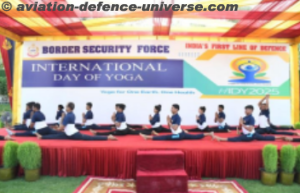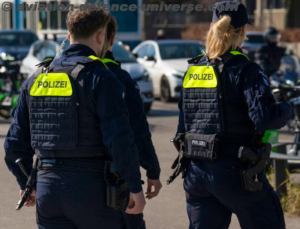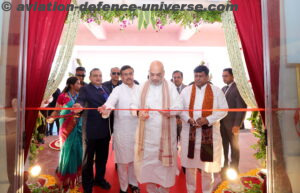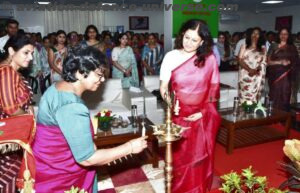New Delhi. 14 December, 2015. The government, on the one hand, needs to give permission through proper licencing of military and civilian use of UAVs, however, on the other, there should be an accurate system for detention and elimination of rouge UAVs. Thus, policy needs to be at three levels: (a) enabling regulations for developmental use of UAVs, and prevention of rouge UAVs; (b) framework for permission and licencing for manufacturing of UAVs; and (c) technological structure for detection and neutralisation of unidentified UAVs.
Union Home Secretary Rajiv Mehrishi highlighted the need to build a technology intensive security framework for the proper control UAVs in the country. He emphasised that the UAV technology has both positive and negative aspects, and thus policy regulations need to be both preventive as well as enabling. Speaking at the seminar organized by FICCI on ‘India’s Internal Security & UAVs’, he urged FICCI to formulate separate committees in all the three areas, and submit its recommendations to the government so as to formulate a comprehensive policy framework for use of UAVs in the country.
Air Vice Marshal V. R. Chaudhari, Indian Air Force; Air Vice Marshal Rajeev Sachdeva, National Technical Research Organisation, Govt. of India; Ms. Manjari Jaruhar, Chairperson FICCI Committee on Private Security Industry and Former Special DG – CISF, Govt. of India and Dr. A. Didar Singh, Secretary General, FICCI also addressed the inaugural session of the programme.
Emphasising the need to re-look at the usages of UAVs in the current state of development, Air Vice Marshal Rajeev Sachdeva, National Technical Research Organisation, Govt. of India, listed some of the important uses of UAVs for traffic and crowd control, VIP security, fire control, flood control, wildlife security, farming, etc. He highlighted that 87 nations possess drones and conduct surveillance through UAVs, and that the demand for UAVs is expected to quadruple by the end of this decade. While there are numerous benefits of military and civilian use of drones, the government should possess potential to prevent unauthorised flying of mischievous and rouge UAVs. The need of the hour is the formulated effective policies for military use of UAVs for security, civilian use of UAVs; and preventing rouge UAVs. However, one should remember that such policies should not prevent the security agencies to function effectively in dealing with the safety and security of the nations, he emphasised.
Speaking at this occasion, Air Vice Marshal V. R. Chaudhari, Indian Air Force provided examples where drones have intruded with the security system. UAVs could be a potential means to carry out attacks in order to disrupt law and order. On the one hand UAVs are an asset and there is proliferation of civil use of UAVs, on the other lack of awareness on the safety and security impact of UAVs. He also highlighted some of the security concerns of unauthorised use of UAVs.
He emphasised that an integrated approach is required to tackle threat form unwanted use of UAVs. MHA, MoCA AND MoD/IAF are involved in defining measures in order to meet the challenge. Definitive arrangements have been put in place to protect few high value locations. However, additional efforts are required to tackle threats on a pan-India basis. He particularly highlighted that this is the right time to approach the problem when manufacture, assembly and use of UAVs are still at a development stage.
Manjari Jaruhar, Chairperson FICCI Committee on Private Security Industry and Former Special DG – CISF, Govt. of India reflected on the fact that UAVs could be manufactured locally, thus, there is potential for unwanted use of UAVs. There is a definitely need to bring in proper regulation to encourage positive use of UAVs, and prevent and eliminate its unwanted use.
Dr. A. Didar Singh, Secretary General, FICCI emphasised that FICCI is committed to public safety and security particularly with reference to safe & secure cities. With 22.5 per cent of the world’s UAV imports, between 1985 and 2014, India is ranked first among the drone importing nations. There is thus an urgent need to formulate a regulatory framework for manufacturing and deployment of UAV-based solution, particularly in the civilian domain.
The inaugural session was followed by technical presentations from key industry members. The speaker included Abhinav Kumar, General Manager – Production, Reliance Aerospace Technologies Ltd. Vinod Yadav, Head – Design (Optronics & Computing Platforms), TATA Power SED; Group Capt. S. D. Tyagi, General Manager, OIS – AT Pvt. Ltd.; Saurav Mishra, COO, Webonise Lab Pvt. Ltd.; Ankit Mehta, CEO & Co-Founder, IdeaForge Technology Pvt. Ltd.; and Vipul Singh, Co-Founder, Aarav Unmanned Systems Pvt. Ltd.
The presentations were followed by a panel discussion on “Policy & Regulatory Framework for Civilian Usage of UAVs in India”. The discussion was chaired by Maj. Gen. R.K. Arora, CEO & Chief Editor, Indian Military Review. The discussants includes Lt. Cdr. John Livingstone, CEO, Johnnette Technologies Pvt. Ltd.; Sqn. Ldr. (Retd.) V. S. Srinivasan, Senior Manager- Aerosystems, TATA Advanced Systems; Capt. Vijay K. Madan, Consultant, Ultimate Aviation Solutions Pvt. Ltd.; and Maj. Gen. R. C. Padhi, Former Additional Surveyor General of India, Govt. of India.































































































































